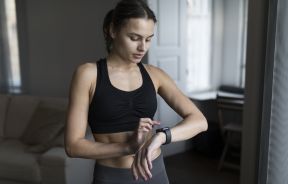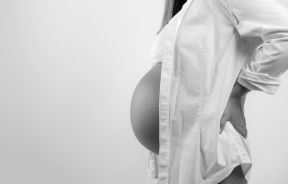Color Psychology Makes Some Instagram Filters More Likable Than Others: The Science Of Selfies

The variety of Instagram filters made available, including the latest addition of Lark, Slumber, and Aden, makes choosing the perfect selfie filter an impossible feat. Although you may consider yourself a self-proclaimed photo editor, you may gain the most likes and comments from certain filters in particular. According to a recent study to be presented at the 9th AAAI Conference on Web and Social Media, photo filters that increase warmth, exposure, and contrast get more likes and comments because they elicit feelings of arousal and excitement.
The rising use of photo apps like Flickr and Instagram has coincided with the popularity of mobile phone photography. In Instagram’s first year, users uploaded over 150 million photos. Now, Instagram users upload 60 million photos a day on average. Its success is attributed to the visual effects or filter option of camera phones. These edits help photographers give their photos refined exposure and a stylized look without much photo editing skills required. But how exactly do these filters influence viewers’ reception?
A team of researchers from Georgia Tech and Yahoo labs sought to observe how filters affect a photo’s engagement, or consumers’ perspective, using both qualitative and quantitative research. First, they conducted in-depth interviews with 15 frequent Flickr users to find more about their photo-filter habits. In the quantitative part, they analyzed 7.6 million Flickr photos uploaded via the mobile app, with more than half cross-posted from Instagram. The researchers also analyzed data on how often the photos were viewed and commented upon, as a means to see how filters influence user engagement.
When it comes to photography, the study concluded there are two types of photographers: serious and casual. The serious photographers use filters as correction tools and prefer milder effects, whereas casuals see filters as a way to significantly transform photos with bolder effects. Filtered photos were more likely to have significant engagement than un-doctored images, especially if they increased warmth, exposure and contrast. Moreover, using the “right” filter can increase the selfie’s view by 21 percent and the number of comments by 45 percent.
The researchers wrote: "Many of our participants mentioned that ... changing their photos through filters makes those photos more special and fun.” This may explain why users on these sites doctor photos all the time. Photo editing leads these users to believe their image is special because they took their time editing and filtering them.
The feeling of fun and excitement can also be attributed to the filter’s color. Unsurprisingly, filters with warm tones such as red and yellow tend to elicit feelings of arousal and cheerfulness, according to the researchers. These findings support the psychological and emotional component of color theory.
A 2007 study published in the journal Color Research & Application found our connotations of colors, the multiple meanings of a single color, and the participants’ reasons for these connotations influence our perception of color. The color red was linked to excitement as it is considered an arousing and stimulating color. It was also associated with characteristics of activity, strength, and stimulation. Longer wavelength hues, including red, orange, and yellow also lead to states of arousal and excitement.
Posting your selfies or photos in general on Flickr and Instagram is marketing yourself and your ability to create visually-engaging stimuli for your viewers. You should put your best face on with the help of filters such as Mayfair, Rise, Valencia, Hefe, and Nashville to maximize your views, likes, and comments. Avoid filters like Lo-Fi and X-Pro II, which are both very saturated and will gain the least amount of likes.
So remember: The reason why no one liked your photo doesn’t have to do with you, it has to do with poor filter choices.
Sources: Bakhshi S, Gilbert E, Kennedy L, and Shamma DA. Why We Filter Our Photos and How It Impacts Engagement. 9th AAAI Conference on Web and Social Media. 2015.
Clarke T and Costall A. The emotional connotations of color: A qualitative investigation. Color Research & Application. 2008.



























